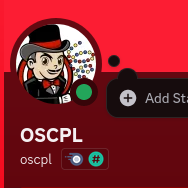An advanced, yet simple, tunneling tool that uses TUN interfaces.
📑 Ligolo-ng Documentation (Setup/Quickstart)
You use Ligolo-ng for your penetration tests? Did it help you pass a certification? Please consider sponsoring the project so I can buy my team some drinks. ☕
We would like to thank the following people for their support in the development of Ligolo-ng.


- Introduction
- Features
- Demo
- How is this different from Ligolo/Chisel/Meterpreter... ?
- How to use - documentation - tutorial
- Does it require Administrator/root access ?
- Supported protocols/packets
- Performance
- Caveats
- Todo
- Credits
Ligolo-ng is a simple, lightweight and fast tool that allows pentesters to establish tunnels from a reverse TCP/TLS connection using a tun interface (without the need of SOCKS).
- Tun interface (No more SOCKS/Proxychains!)
- Simple UI with agent selection and network information
- Easy to use and setup
- Automatic certificate configuration with Let's Encrypt
- Performant (Multiplexing)
- Does not require privileges on the agent
- Socket listening/binding on the agent
- Multiple platforms supported for the agent
- Can handle multiple tunnels
- Reverse/Bind Connection
- Automatic tunnel/listeners recovery (in case of network issues)
- Websocket support
Ligolo-ng-demo.webm
Instead of using a SOCKS proxy or TCP/UDP forwarders, Ligolo-ng creates a userland network stack using Gvisor.
When running the relay/proxy server, a tun interface is used, packets sent to this interface are translated, and then transmitted to the agent remote network.
As an example, for a TCP connection:
- SYN are translated to connect() on remote
- SYN-ACK is sent back if connect() succeed
- RST is sent if ECONNRESET, ECONNABORTED or ECONNREFUSED syscall are returned after connect
- Nothing is sent if timeout
This allows running tools like nmap without the use of proxychains (simpler and faster).
You will find the documentation for Ligolo-ng, as well as the steps to follow to get it up and running on the Ligolo-ng Wiki
On the agent side, no! Everything can be performed without administrative access.
However, on your relay/proxy server, you need to be able to create a tun interface.
- TCP
- UDP
- ICMP (echo requests)
You can easily hit more than 100 Mbits/sec. Here is a test using iperf from a 200Mbits/s server to a 200Mbits/s connection.
$ iperf3 -c 10.10.0.1 -p 24483
Connecting to host 10.10.0.1, port 24483
[ 5] local 10.10.0.224 port 50654 connected to 10.10.0.1 port 24483
[ ID] Interval Transfer Bitrate Retr Cwnd
[ 5] 0.00-1.00 sec 12.5 MBytes 105 Mbits/sec 0 164 KBytes
[ 5] 1.00-2.00 sec 12.7 MBytes 107 Mbits/sec 0 263 KBytes
[ 5] 2.00-3.00 sec 12.4 MBytes 104 Mbits/sec 0 263 KBytes
[ 5] 3.00-4.00 sec 12.7 MBytes 106 Mbits/sec 0 263 KBytes
[ 5] 4.00-5.00 sec 13.1 MBytes 110 Mbits/sec 2 134 KBytes
[ 5] 5.00-6.00 sec 13.4 MBytes 113 Mbits/sec 0 147 KBytes
[ 5] 6.00-7.00 sec 12.6 MBytes 105 Mbits/sec 0 158 KBytes
[ 5] 7.00-8.00 sec 12.1 MBytes 101 Mbits/sec 0 173 KBytes
[ 5] 8.00-9.00 sec 12.7 MBytes 106 Mbits/sec 0 182 KBytes
[ 5] 9.00-10.00 sec 12.6 MBytes 106 Mbits/sec 0 188 KBytes
- - - - - - - - - - - - - - - - - - - - - - - - -
[ ID] Interval Transfer Bitrate Retr
[ 5] 0.00-10.00 sec 127 MBytes 106 Mbits/sec 2 sender
[ 5] 0.00-10.08 sec 125 MBytes 104 Mbits/sec receiverBecause the agent is running without privileges, it's not possible to forward raw packets. When you perform a NMAP SYN-SCAN, a TCP connect() is performed on the agent.
When using nmap, you should use --unprivileged or -PE to avoid false positives.
- Implement other ICMP error messages (this will speed up UDP scans) ;
- Do not RST when receiving an ACK from an invalid TCP connection (nmap will report the host as up) ;
- Add mTLS support.
- Nicolas Chatelain <nicolas -at- chatelain.me>



